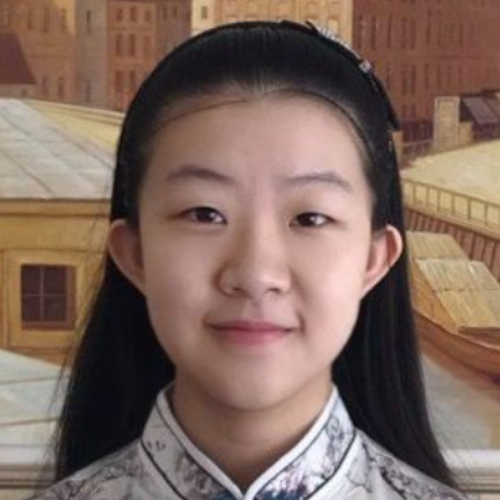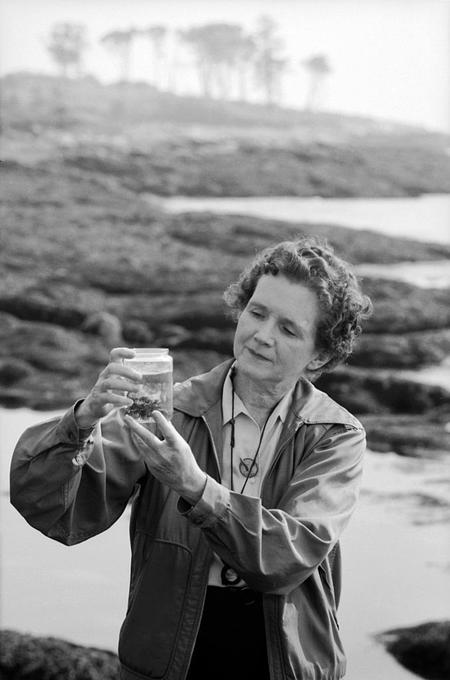“Man’s endeavors to control nature by his powers to alter and to destroy would inevitably evolve into a war against himself,” stated marine biologist, conservationist, and best-sellling author, Rachel Carson. When Carson was born in a small, rural town in Pennsylvania, nobody knew that she was going to devote her entire life to bring people’s attention to the above quotation, writing one of the most influential books of the 20th century - Silent Spring. Growing up on a farm beside the Allegheny River, she began to develop her deep-rooted love and respect for nature as a child, influenced by her exploration of the river and her mother, who taught her to appreciate nature. Carson not only developed her passion in the environment as a child, but also demonstrated her talent in writing at the age of 11, winning a prize and publishing her story in St. Nicholas Magazine.
With her passion for writing, she graduated high school with honors and entered Pennsylvania College for Women as an English major. However, in Sophomore year biology class, she met her mentor, Mary Skinker, one of the most important people in her life. Skinker awoke Carson’s interest in biology, forever changing the trajectory of her life. Under the influence of Skinker, she made the brave decision to change her major from English to Biology. Further supporting her student down the path of biology, Skinker not only exposed Carson to marine biology with her summer fellowship at the Marine Biological Laboratory of Woods Hole, but also contributed to Carson’s winning of a scholarship during her graduate work at Johns Hopkins University, an unusual accomplishment for a female at the time.
Due to the Great Depression and family members passing, Carson was forced to terminate her plan to pursue a doctorate degree. However, Skinker encouraged her to study for the civil service exams and prepared her for them, allowing Carson to be ready for a part-time job in the U.S. Bureau of Fisheries that opened up in 1935. Outscoring many competitors on the civil service exams, she became the second woman to be hired there. She was hired to write scripts for short radio programs called “Romance Under the Waters,” expanding her exposure to marine biology.
Demonstrating her strengths at the intersection of biology and writing, she soon became hired as a junior aquatic biologist. Later, she began to manage publications of the U.S. Fish and Wildlife Services. Over the course of 15 years of working with the government, she started with a part-time job, and ended with the position of Editor-in-Chief, overlooking all publications of the U.S. Fish and Wildlife Services. Her responsibilities included reviewing manuscripts as well as reporting to the government by preparing speeches for congressional testimony.
While Carson expanded her career as a biologist working with the government, she did not cease to express her passion in writing. After her brief exposure to marine biology as a student, she had many more opportunities to interact with the sea after being hired professionally in the U.S. Fish and Wildlife Services. To assist the government in policy making, she constantly visited the Chesapeake Bay to learn more about the environmental condition of the area. She also participated in a project exploring the undersea world for submarine warfare during WWII. With her easy access to the waters and frequent exposure to marine life, she published a series of books about the ocean, including Under the Sea-Wind, The Sea Around Us, and The Edge of the Sea. Among these books, The Sea Around Us proved to be a great success, being listed as one of the New York Times best-sellers for a record-breaking 86 weeks, as well as winning her many awards and a considerable amount of prize money. Encouraged by this financial success, Carson retired from the U.S. Fish and Wildlife Services and became a full-time author. It was during this time that she published the influential work that aroused national debate around the widespread use of pesticides: Silent Spring.
In fact, Carson’s concern regarding pesticides began many years ago during WWII. Back in the days during the war, the invention of DDT, a particularly strong pesticide, was seen as a world-renowned accomplishment that met little criticism. Unlike previous pesticides that target specific insects, DDT is strong in that it is indiscriminate and kills many different insects, solving the problem of malaria-causing insects for the U.S. troops in WWII. Carson proposed several articles discussing the potential negative effects of wide pesticide use on the health of ecosystems to magazines at this time, but they were all rejected.
Carson’s concern proved valid. After the end of WWII, DDT began to expand its civilian use, primarily for increasing crop production in agriculture. With her background in biology, Carson was immediately alarmed and started to consider the potential effect of DDT on the environment and the health of humans. After receiving news from her friend about the unusual amount of bird deaths following the use of pesticides in Massachusetts, she finally set her mind on a book to warn the public about the consequence of pesticide misuse.
Her most influential piece of literature, Silent Spring, combined Carson’s distinction as a meticulous biologist and talented writer. Foreseeing considerable controversy on the issue she hoped to discuss, she backed up her book with four years of research, culminating in 55 pages of research notes and the endorsement of many fellow scientists. Finally, the book was published, and her prediction was correct. The book indeed received instantaneous attention from all over the nation, and debates soon followed. Seeing a potential threat to the profit produced by their product, the chemistry industry fiercely attacked the credibility of the book as well as the author. As a result of all the attention from the public, President Kennedy ordered the Science Advisory Committee to investigate the validity of Carson’s warning. Four years of tedious research paid off - her proposal suggesting the potential harm of pesticide use was validated by the report of the Science Advisory Committee. As a direct result of her bravery and meticulousness, the use of DDT became more restricted and eventually banned. A few years later, the government established the Environment Protection Agency, an indirect result of Carson’s effort to protect the environment.
After her death in 1964, a middle school and a refuge of the U.S. Fish and Wildlife Services were named after her to honor her great accomplishments. Looking back at the life of Rachel Carson, we surprisingly find that her idea of collaborating with nature instead of rising above nature has transcended time - it is still, if not more, relevant in today’s society. However, more important than her message to preserve the environment is the message she sent to the younger generation with her life story. Carson’s achievements inspired the future generation to never be afraid of authority. Expecting a wave of attacks from the chemistry industry, she did not back off. Instead, she collected solid evidence to prove her point and stood up against the spread of misinformation. We should all be inspired by the life of Rachel Carson, a woman who demonstrated what to do in a power imbalance: don’t hesitate. Fight back with facts.

